Galway Cathedral
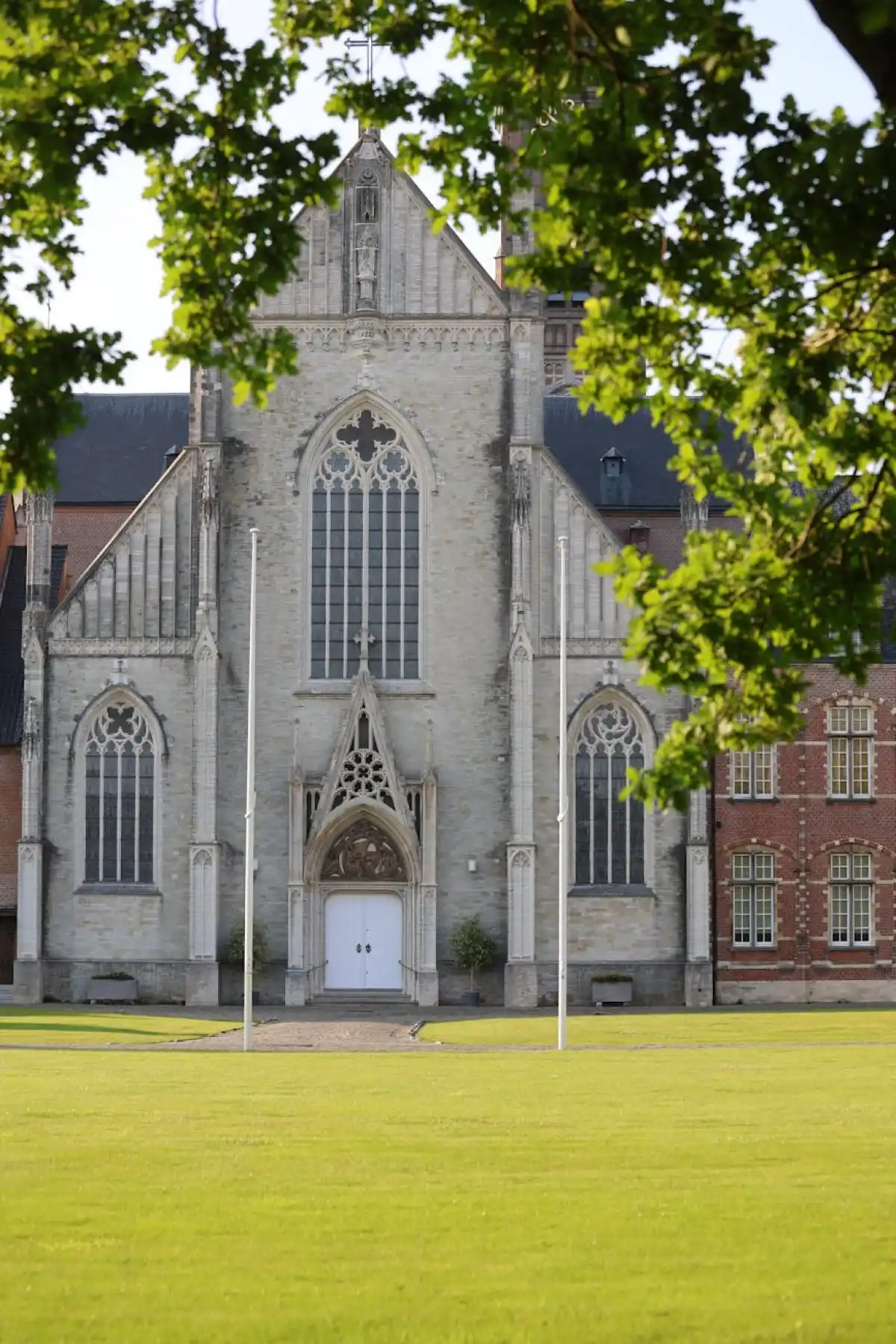
Located right in the bustling heart of Galway, the Galway Cathedral is more than just an iconic building—it’s a remarkable blend of Ireland’s traditional architecture with mid-20th-century design. Officially named the Cathedral of Our Lady Assumed into Heaven and St. Nicholas, it was built between 1958 and 1965, symbolizing the nation’s strength and spiritual journey.
Stepping inside, visitors are welcomed by the glow of sunlight streaming through expansive stained-glass windows, masterfully designed by the celebrated Irish artist Harry Clarke. Each window vividly portrays biblical scenes and saintly figures, enhancing the spiritual atmosphere. The cathedral cleverly fuses Romanesque Revival and Byzantine styles, seen in its detailed mosaics, rounded arches, and stunning stonework. Don’t overlook the Lady Chapel, an intimate space ideal for quiet reflection, noted for its intricate sculptures and delicate stained glass.
Beyond its religious importance, Galway Cathedral also plays a significant role in the local cultural scene. Today, it frequently hosts music concerts and community events, thanks to its excellent acoustics.
Expert tip! If you have time, climb the tower for panoramic views over Galway, explore the small crypt museum detailing the cathedral’s construction, or relax in its peaceful gardens—a perfect spot for a tranquil pause from city life.
Spanish Arch
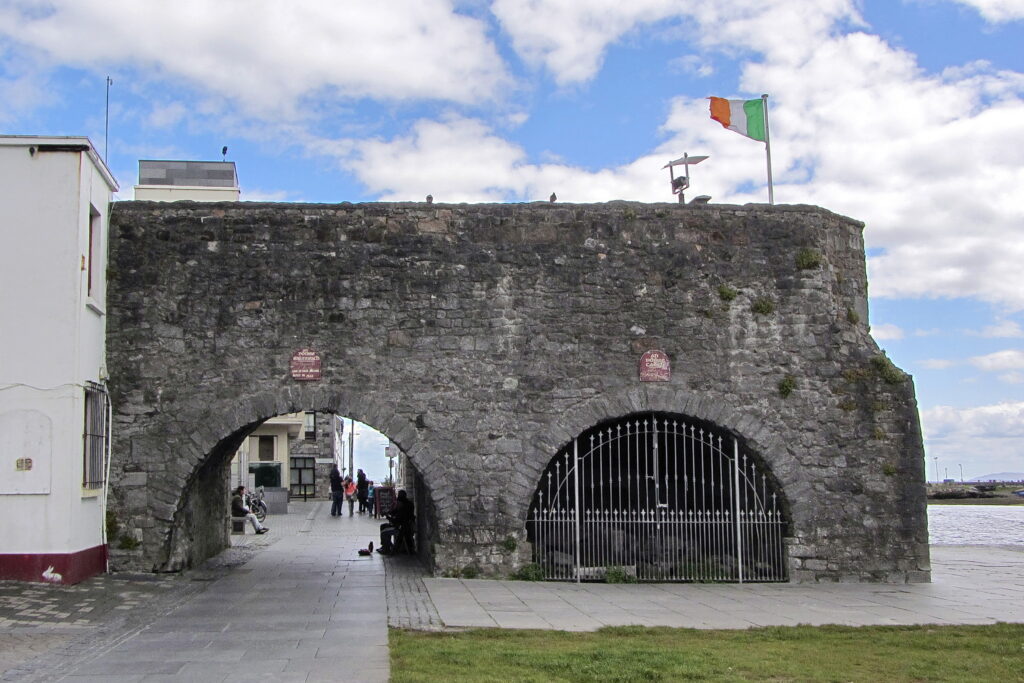
Set beside Galway’s scenic River Corrib, the Spanish Arch is a captivating symbol of the city’s rich maritime heritage. Built in 1584, this limestone structure was initially part of Galway’s defensive walls, serving as a critical entry point for merchants and sailors. Despite its name, the arch’s connection to Spain is indirect, stemming from a Spanish galleon, La Trinidad Valencia, that famously wrecked nearby in 1588, adding intrigue and legend to its historical significance.
From an architectural point of view, the arch stands out for its simplicity and robustness, typical of medieval Irish construction. Its distinctive semicircular shape and solid pillars have withstood centuries of wear and tear thanks to constant conservation work. Nearby, you can visit the remains of the old city walls, offering tangible evidence of Galway’s medieval past, and a large number of cafés, pubs, and craft boutiques that show how life goes on around them without this structure seeming to be disturbed.
Latin Quarter
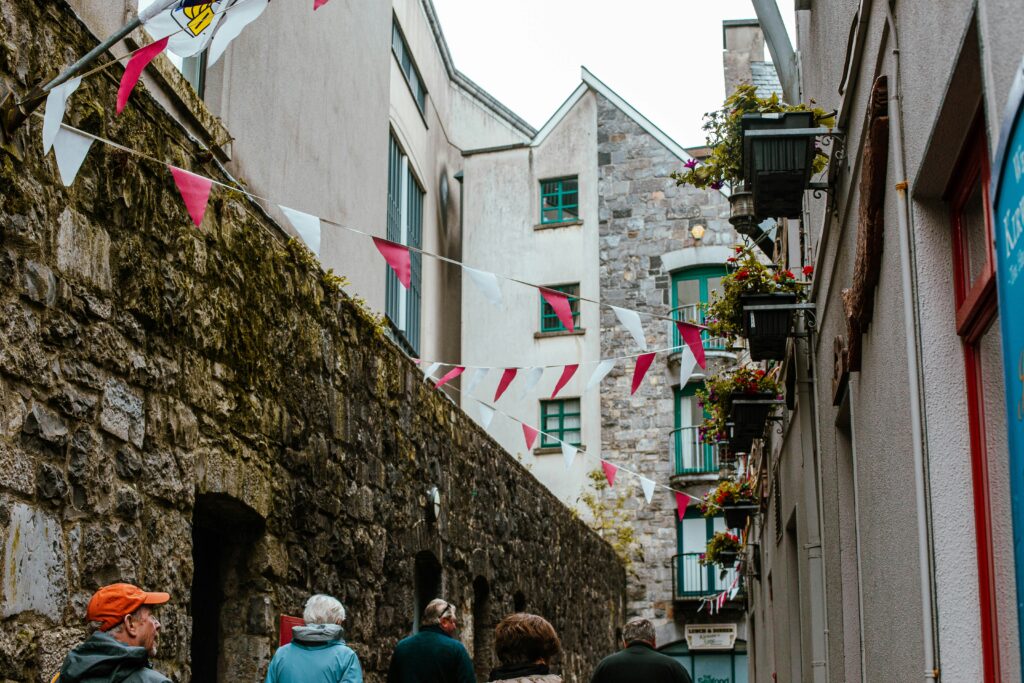
Exploring the Latin Quarter means delving into the historic and cultural heart of Galway. This lively district is known for its cobbled streets, historic buildings, artisan shops, and vibrant local life thanks to its vintage clothing stores, countless jewelry shops, cafés, bakeries, and many other local businesses. Its name comes from medieval times when Latin was the language of scholarship, reflecting its long-standing connection to education and creativity.
At its center is Eyre Square, a popular meeting place famous for its colorful facades, street markets, and for being the city’s chosen spot for locals to celebrate a large number of festivities.
In the evenings, the neighborhood comes alive with music and entertainment at venues such as Tigh Neachtain and The King’s Head. In addition, annual festivals such as the Galway International Arts Festival are held here, attracting international artists and many art and culture lovers to its streets.
Quay Street
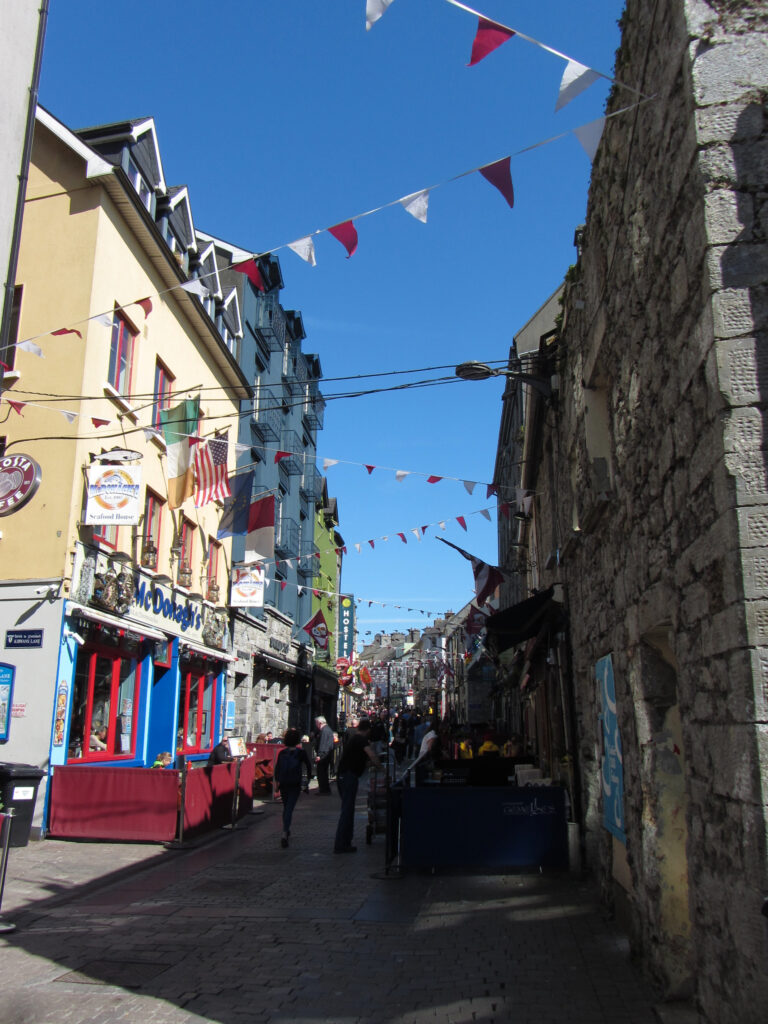
Quay Street is the heart of Galway’s cultural life. With its 18th-century Georgian buildings and authentic cobblestones, this street invites you to stroll leisurely and soak up the local atmosphere.
Here you will find boutiques selling unique handicrafts, jewelry, and Irish wool products, ideal as souvenirs. Pubs and cafés delight with the aromas of traditional dishes. Evening music sessions are especially appealing to music lovers.
The view of the Galway River from Quay Street Bridge is particularly attractive to visitors, especially at sunset, when it offers spectacular views bathed in warm tones.
Galway City Museum
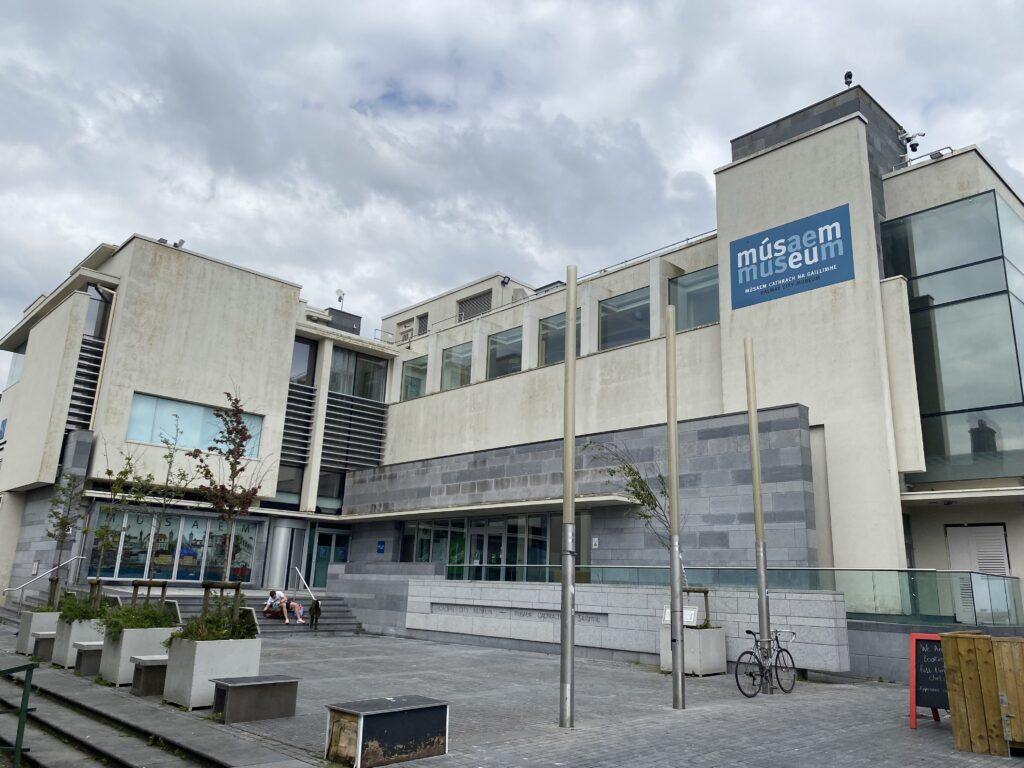
Set in Galway’s lively Latin Quarter, the Galway City Museum offers visitors a fascinating exploration of the city’s history. Housed in a thoughtfully renovated 19th-century building, originally home to the Galway Harbour Commissioners, the museum seamlessly combines historical character with modern design. Its strategic position near Galway Harbour highlights its longstanding significance as a maritime center.
Inside, the museum showcases Galway’s maritime legacy, archaeological discoveries, and local folklore. A key attraction is the interactive maritime exhibit, where visitors can view detailed ship models, navigational equipment, and vivid accounts of Galway’s vital role in Atlantic trade. Meanwhile, the archaeology section invites visitors to explore ancient artifacts, from prehistoric tools to medieval finds, that reveal the area’s deep historical roots. Dedicated spaces for local art and storytelling further illustrate Galway’s cultural richness.
The museum also features a gift shop with carefully selected crafts and books reflecting Galway’s heritage, and a welcoming café serving local produce. Whether you’re passionate about history, curious about local culture, or seeking family-friendly activities, the Galway City Museum provides an insightful, interactive, and memorable experience.
Galway Bay and Salthill Promenade
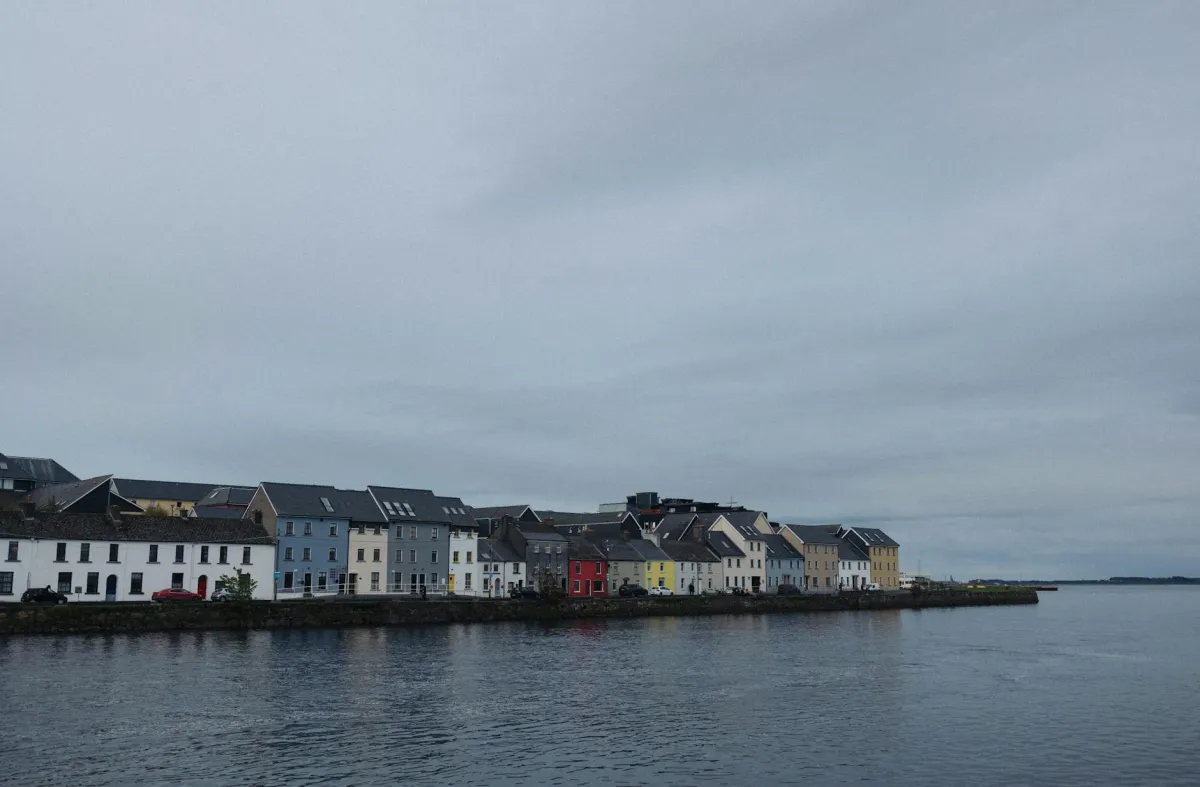
Galway Bay stretches dramatically along Ireland’s Atlantic coastline, offering visitors captivating views of rugged cliffs, rolling hills, and abundant marine life. The bay’s crystal-clear waters are perfect for various recreational activities, including sailing, kayaking, fishing, and wildlife watching, where dolphins, porpoises, and migratory seabirds are commonly sighted. Its geological heritage, shaped by ancient volcanic events and glacial movements, provides fascinating landscapes for exploration and photography, particularly stunning during the soft hues of sunrise and sunset.
One of the most appealing ways to experience Galway Bay is by venturing to its small islands, notably Inis Oírr and Inis Meain. These islands maintain strong traditional Irish communities, offering visitors authentic glimpses into local customs and unspoiled natural beauty. Boat tours and kayaking adventures make exploring these hidden coves and quiet beaches an unforgettable part of any Galway trip.
Running alongside the bay, the Salthill Promenade is Galway’s beloved coastal walkway. Spanning more than two kilometers, it provides panoramic ocean views and a relaxed atmosphere, ideal for leisurely strolls, cycling, or simply relaxing on benches facing the Atlantic breeze. The promenade is known for the iconic “kissing stone”, a quirky local tradition where visitors lean in to kiss the stone for good fortune.
Notable landmarks along the bay the route include Galway Atlantaquaria, Ireland’s largest native species aquarium, and the historical Salthill Church, combining cultural exploration with natural enjoyment.
Eyre Square
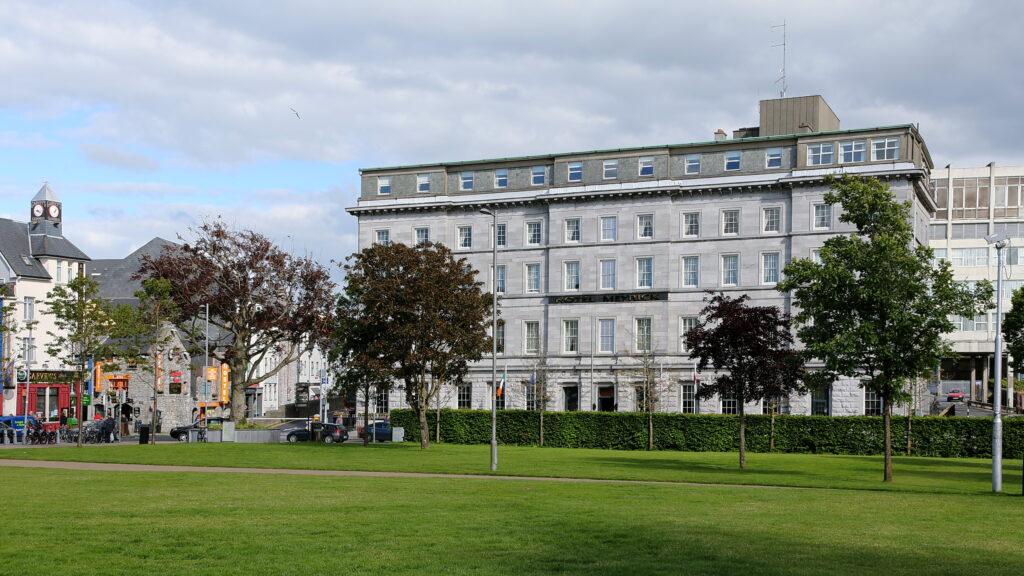
Eyre Square sits right at Galway’s core, offering a perfect snapshot of the city’s rich blend of history, culture, and modern energy. Known officially as John F. Kennedy Memorial Park, this iconic square has historically been the heart of Galway’s social life since medieval times, originally serving as a marketplace and gathering place.
At the center of Eyre Square stands a prominent statue of Daniel O’Connell, a popular Irish political figure who championed independence and civil rights. Nearby, an elegant fountain adds tranquility amidst the lively urban setting.
During warmer seasons, this area buzzes with street performers, outdoor cafés, and bustling events, providing an engaging experience for visitors and locals alike.
For those looking to relax, benches and green spaces within Eyre Square offer excellent spots to observe the city’s vibrant daily life. Whether you’re catching street musicians performing traditional Irish melodies, locals meeting up, or tourists soaking up the atmosphere, Eyre Square encapsulates Galway’s welcoming and dynamic community essence.
Lough Corrib and Surrounding Countryside

Lough Corrib is a must-see destination. It is Ireland’s second largest lake, covering 176 square kilometers, and is highly prized by locals (especially birdwatchers and fishermen) and travelers for its natural beauty and ecological richness.
Fishing is one of the main attractions of Lough Corrib, which is particularly well known for its abundant trout and salmon population. But beyond fishing, the lake offers excellent conditions for enjoying boat trips, kayaking, and sailing, allowing you to discover hidden coves and historic islands, some of which feature interesting ruins and archaeological sites.
On the other hand, wildlife lovers will also find much to admire here, as numerous species of birds, such as herons, cormorants, grebes and even eagles on occasion, have their habitat in this area, which is particularly lively during the migration seasons.
But beyond the wildlife, visitors can also enjoy ancient castle ruins such as Clonbur and villages such as Cong, famous for the film “The Quiet Man,” near the lake.
Best free walking tours in Galway
Every city tells a story. Galway sings one — layered, weathered, and full of discord. We’re here to tune you…
Explore the beautiful medieval city of Galway with us! We visit all of the most important sights, including:
Galway’s story is often told through its Anglo-Norman walls and merchant past. But across the Corrib lay another Galwa…
We're a small, local collection of Tour Guides who try to mix history, legend, conversation, laughter and our own experiences…
Do you dare to discover the hidden side of Galway? Galway is much more than its colorful streets and …
Visiting Galway is like experiencing the most authentic Ireland: you'll sense it as soon as you step foot on its…
This tour awaits a surprise and a gift at the end. Galway is a city of contrasts, a two-side…
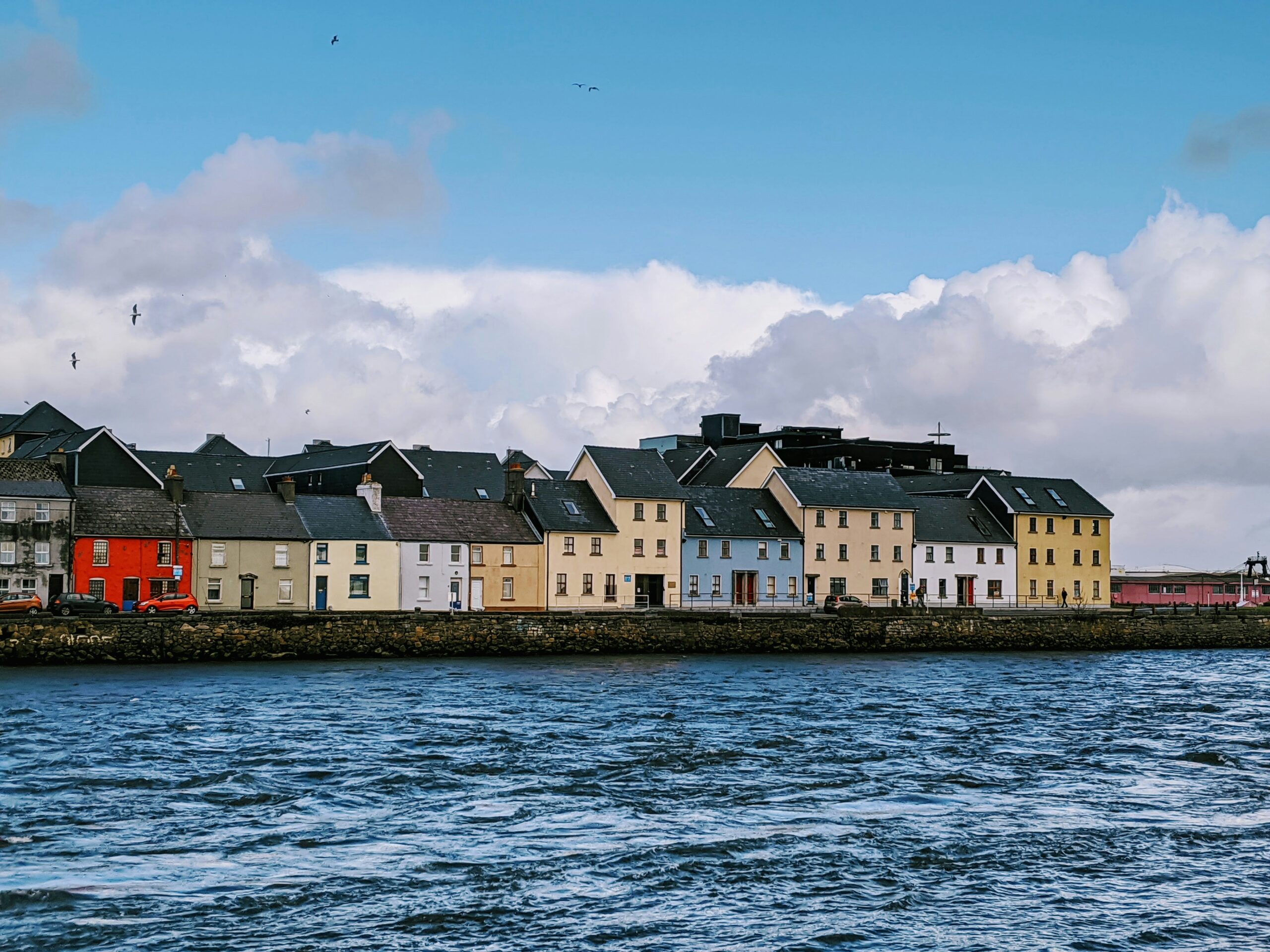

Discover more interesting places to see